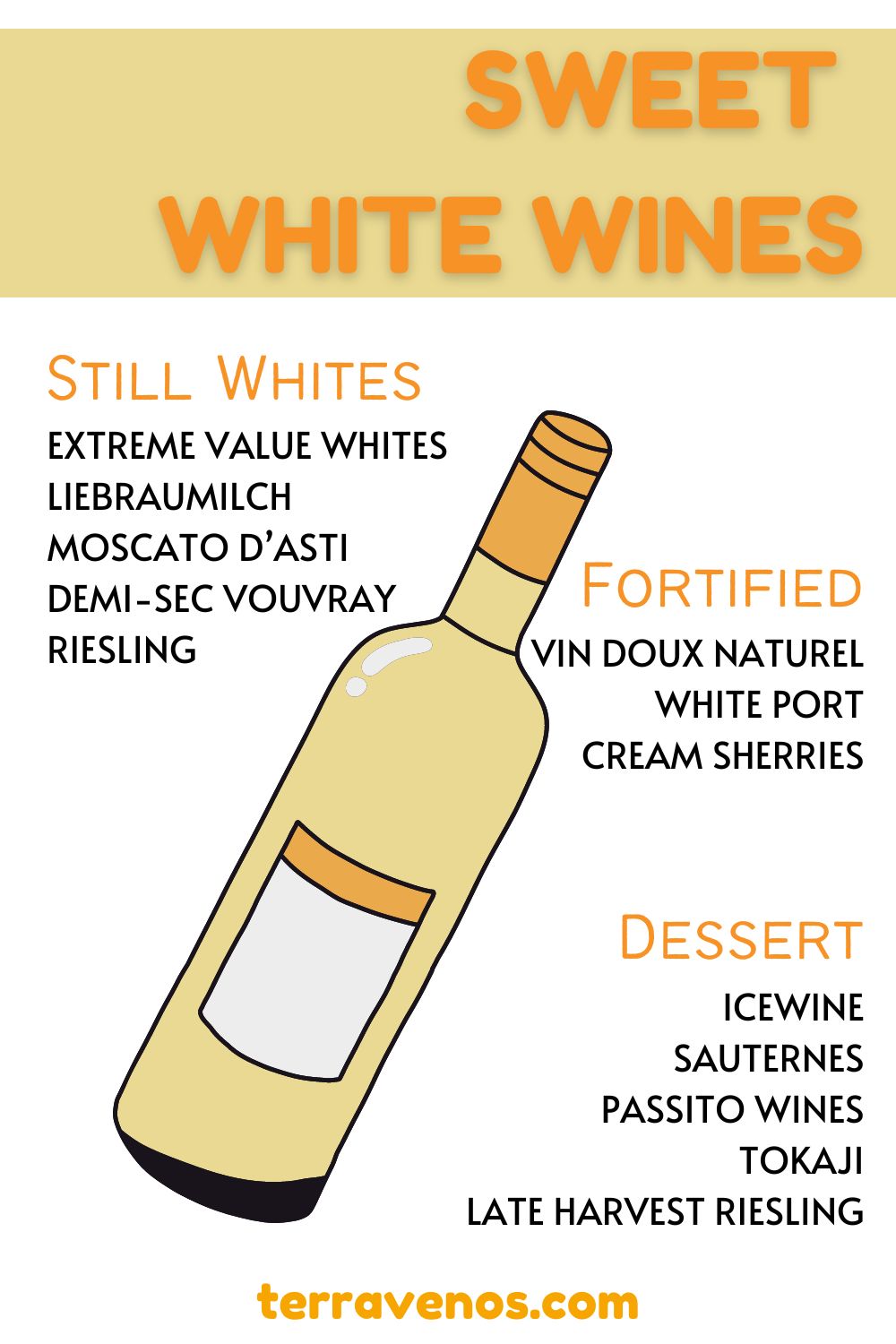
Individual tastes in wine are, well, individual. One of the enduring challenges when it comes to buying wine is that you have no idea what’s in the bottle if you’re new to wine. Here to help.
There are sweet white wines like Liebfraumilch, Moscato d’Asti, Riesling, and Demi-sec Vouvray. Late harvest Riesling, Icewine, Sauternes, Passito wines, and Tokaji are dessert wines. White Port, Vin Doux Naturel, and Cream Sherries are sweet fortified wines. Champagne and sparkling wines can be sweet. Inexpensive white wines often come in an off-dry style.
Here’s a rundown of how the different ways winemakers make sweet white wines and 14 great sweet white wine options.
- How Do They Make Sweet White Wines?
- Which White Wine Is Sweet? 14 Great Options
- Sweet White Wine #1 – Liebfraumilch
- Sweet White Wine #2 – Moscato d’Asti
- Sweet White Wine #3 – Riesling
- Sweet White Wine #4 – Demi-sec Vouvray
- Sweet White Wine #5 – Late Harvest Riesling
- Sweet White Wine #6 – Icewine or Eiswein
- Sweet White Wine #7 – Sauternes
- Sweet White Wine #8 – Passito Wines
- Sweet White Wine #9 – Tokaji
- Sweet White Wine #10 – White Port
- Sweet White Wine #11 – Vin Doux Naturel
- Sweet White Wine #12 – Cream Sherries
- Sweet White Wine #13 – Champagne and Sparkling Wine
- Sweet White Wine #14 – Extreme-Value White Wines
- Final Thoughts – Different Sweet White Wines
- Thirsty for More?
How Do They Make Sweet White Wines?
The sweetness level in a white wine comes down to two factors: grape growing and winemaking.
Grape Growing and White Wine Sweetness

In the vineyard, winegrowers can concentrate the sugar, acid, and flavors in their grapes by allowing them to dehydrate. When the grape loses water through dehydration, it has a higher ratio of these other compounds. There are 4 natural ways to remove water from the grapes.
- Noble Rot. A fungus called botrytis cinerea lands on the skins of the grapes while they’re in the vineyard pierces the skins and allows water to evaporate. This method relies on vineyard location and perfect weather conditions.
- Passito. In this process, which literally translates to ‘raisin’ in Italian, the winegrowers harvest the grapes and lay them out on mats or hang them up to dehydrate.
- Freezing the Grapes. This method’s used in cold climates, like Germany and Canada. The grapes are allowed to stay in the vineyard through early winter. They go through a freeze-thaw cycle. The grapes get harvested when they’re frozen and brought into the winery, and the winemaker separates the water ice crystal from the sugary goodness of the grapes.
- Riper Grapes. Perhaps the easiest way to get sweeter wines is to allow them to stay in the vineyard longer. The grapes accumulate more sugar getting uber-ripe. You’ll see this method designated on labels as “late harvest”.
The important wine factoid to know is that yeast, those nifty little guys responsible for turning juice into wine, can’t survive in sugary, high-alcohol environments.
By naturally concentrating the sugars in the grapes using one of these 4 methods, the winegrower guarantees a sweet style of wine for the winemaker simply because the yeast won’t be able to ferment all of the sugar in the wine.
Helpful Tip: If you’re really curious about the nerdy aspects of wine, then hop over to this post that covers how wine fermentation works (It’s a bit technical).
Winemaking and White Wine Sweetness
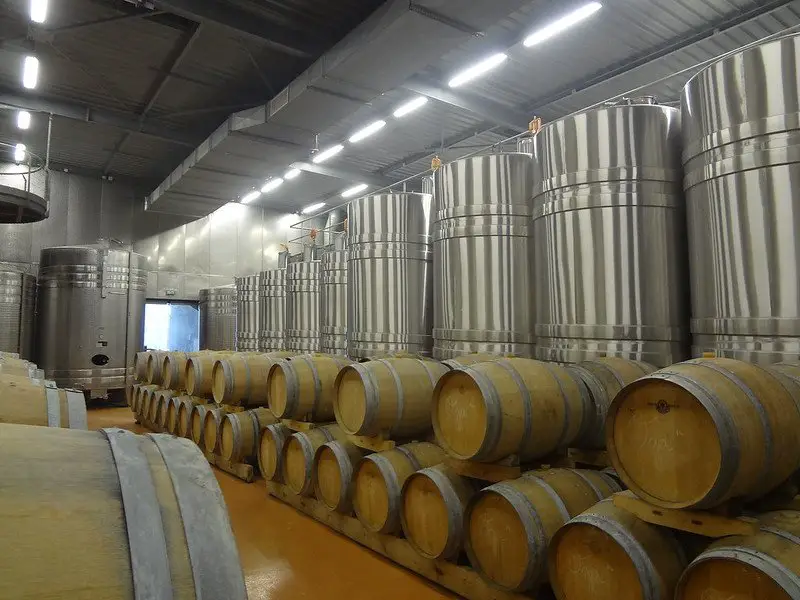
If winegrowing is about manipulating the grapes in the vineyard to concentrate the sugar in each and every berry, then winemaking is all about what happens in the winery to manipulate the sweetness in your wine. Sweetness in white wine can come from three sources during winemaking:
Option 1. Stop Fermentation.
The winemaker stops fermentation before the yeast have converted all of the sugar into alcohol, leaving some of the grape juice unfermented.
Two classic, well-known examples of this method are Moscato d’Asti and Port.
Helpful Tip: Here’s a geeky post on how wine fermentation works. It’s not for everyone, but maybe it’s for you!
Option 2. Add Grape Juice.
The winemaker ferments the grape juice to dryness, however, this isn’t the desired style of wine. The winemaker can set aside some of the sweet grape juice before fermentation and add it back to the finished wine right before bottling. This method increases the volume of the final wine but can dilute some of the wine’s flavors.
Option 3. Additives.
The winemaker adds a highly extracted and concentrated form of grape juice called rectified concentrated grape must to the final wine. This syrupy concoction enhances the mouthfeel, body, and sweetness of the final wine. As you can imagine, rectified concentrated grape must is considered something of a scurrilous additive when it comes to winemaking purists, but plays an important role in inexpensive wines.
Rectified concentrated grape must is an expensive industrial additive and is more commonly used with extreme-value, entry-level wines from huge producers.
Which White Wine Is Sweet? 14 Great Options
Now that you know the different ways that sweet white wines can get their sweetness, here are some sweet white worth trying as well as a few tips to know which white wine is sweet the next time you’re at your local bottle shop.
Sweet White Wine #1 – Liebfraumilch

Liebfraumilch (pronounced Leeb-frow-milsh) is a semi-sweet German white wine. The name Liebfraumilch in German stands for ‘Beloved lady’s milk’, in reference to the Virgin Mary.
Sugar is a noticeable characteristic in Liebfraumilch. This sweet white wine is a blend of grapes, including a minimum of 70% Riesling, Silvaner, or Müller-Thurgau, and it must have 18–40 grams per liter of residual sugar (it’s sweet).
What Does Liebfraumilch Taste Like?
Liebfraumilch is a crisp, high-acid wine with a light body and low alcohol (under 10% ABV). This is an easy-drinking white wine with perfumed aromatics, peach, nectarine, and floral notes. Liebraumilch is a good, everyday wine if you’re looking for an uncomplicated wine that’s technically well-made.
Fun Wine Fact: Liebraumilch isn’t actually popular in Germany. It’s made for the export market.
How Much Does Liebfraumilch Cost? Inexpensive – Relatively easy to find
Expect to pay around $10 USD for a bottle of imported Liebfraumilch. You’ll probably need to go to a store with a large selection of wines to find this sweet white wine, but you shouldn’t have to seek out a specialty wine shop.
Sweet White Wine #2 – Moscato d’Asti

The Moscato grape, also called Muscadelle or Moscatel, makes beautifully fragrant white wines with white flowers, stone fruits – nectarine, peach – and pungent grapey notes. They bring rich perfume to any wine.
Moscato d’Asti comes from northern Italy, where they’ve perfected winegrowing and winemaking for this unique sweet white wine style. The wine’s sweetness comes from stopping fermentation early and leaving unfermented grape juice behind.
What Does Moscato d’Asti Taste Like?
Moscato d’Asti wines will always be low alcohol, light bodied, medium acidity, fruity, and slightly sweet wines with a little spritz to them. Moscato d’Asti delivers a refreshing drinking experience perfect as an aperitif or lazy afternoon of sipping.
Helpful Tip: Moscato d’Asti wines tend to be more approachable than Rieslings thanks to tamer acid levels.
How Much Does Moscato d’Asti Cost? Inexpensive to Mid-Priced – Easy to find
- Entry-level Moscato d’Asti may only cost $5 USD.
- Quality Moscato d’Asti will still be an affordable $15-$20 USD
Thanks to this sweet white wine’s popularity and a production process that leverages large volumes of wine, you should be able to find Moscato d’Asti anywhere that sells wine and at reasonable prices. (Okay, if it’s only a store that sells French wines, maybe not… but, seriously, this sweet white wine is everywhere. And I approve.).
Sweet White Wine #3 – Riesling
Originally from Germany, Rieslings come in a range of styles, from fully dry to lusciously sweet. If you want an off-dry or medium sweet Riesling, look for bottles with alcohol under 10% ABV. Lower alcohol levels are a label clue that the winemaker left some sugar in the bottle. They do this to balance out Riesling’s notoriously high acid (think the classic sweet/sour combination).
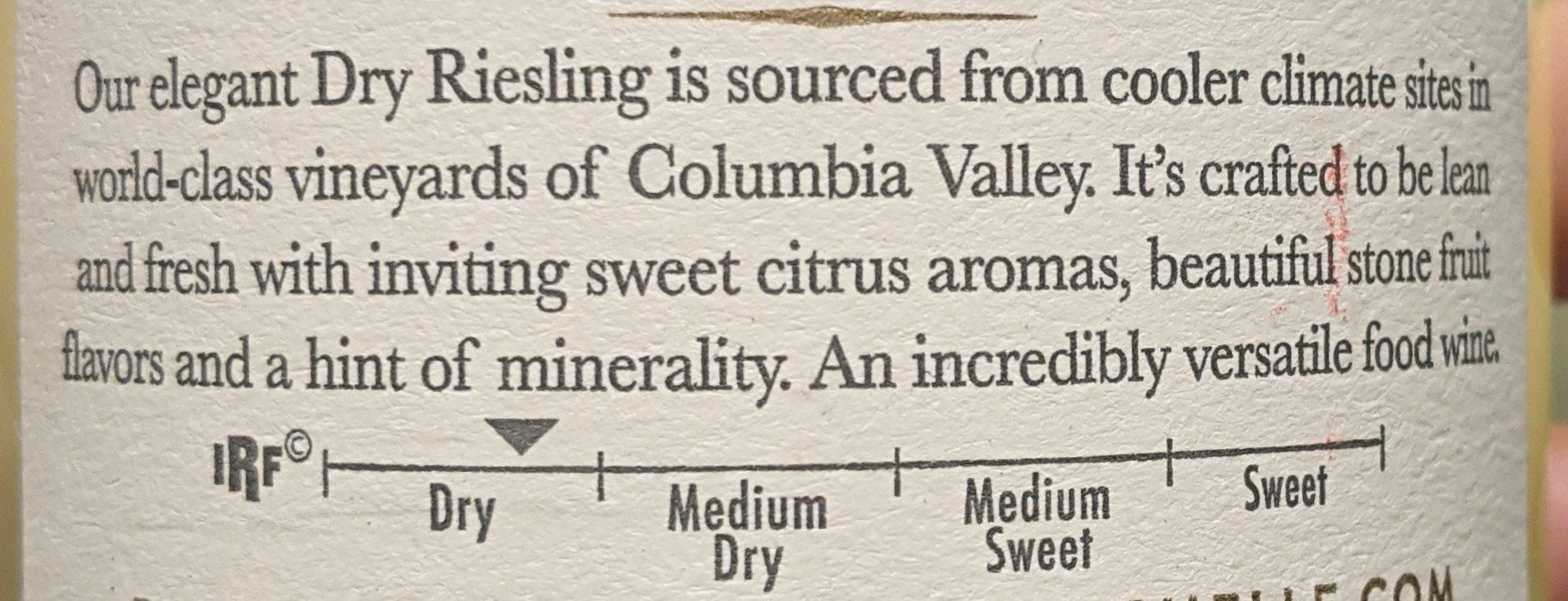
Increasingly, producers put a helpful sweetness indicator on the back of your Riesling bottle. Use that to help identify which white wine is sweet.
Helpful Tip: Stay away from German Rieslings with a GG on the label or bottle glass. Grosses Gewächs, or “great growths” (GG for short) Rieslings with GG will always be steely dry white wines. They’re still fruity, but you’ll want to avoid GG wines if you’re looking for a wine that’s fruity and sweet.
What Does Riesling Taste Like?

Like Moscato, Riesling grapes are highly aromatic with powerful notes of white jasmine, citrus, and stone fruits, like peach and nectarine. With age, Riesling takes on a unique aroma in the wine world: petrol or rubber (like a new basketball or tennis shoes).
How Much Does Riesling Cost? Mid-Priced to Premium Priced – Relatively easy to find
- Entry-level Riesling may only cost $5 USD.
- Look for mid-priced Riesling for wines with depth of flavor. Expect to pay $20-$30 USD.
- Quality, age-worthy Riesling can cost you an eye-watering $100-$200 USD
Sweet White Wine #4 – Demi-sec Vouvray
White Vouvray wines made with Chenin Blanc grapes come from the Loire Valley in France. Not all Vouvray is made in a sweet style, so look for the words “demi-sec” which translates to “half dry”. This means that your Vouvray will be fruity and sweet. Stay away from bottles with “sec”, which translates to dry. Vouvray’s a perfect transition wine from Moscato d’Asti to more mainstream white table wines.
What Does Vouvray Taste Like?

Chenin Blanc wines offer up juicy pair, sweet golden apple, quince, and chamomile flowers in your glass. Vouvray usually has high acid, low to medium alcohol (10%-12% ABV), and a light, refreshing body. Serve your Vouvray wine chilled: take it out of the refrigerator 10-15 minutes before drinking. You don’t need to decant Vouvray, and it’s not typically a wine that’s meant to age.
Helpful Tip: Here’s a deep-dive into Chenin Blanc tasting notes that will give you a full overview of the range of styles and flavors this little white grape can off you.
How Much Does Vouvray Cost? Mid-Priced to Premium Priced – Somewhat difficult to find
- Entry-level Vouvray will cost you around $15 USD
- Expect quality Vouvrays to cost $25 – $45 USD
You’ll be able to find Vouvray at large wine stores, but probably not at your local quickie market or corner grocery store. You’ll find them in the wine section for Loire, France.
Sweet White Wine #5 – Late Harvest Riesling
Some Riesling styles will always be sweet. These styles of sweet white wine are crafted by harvesting the grapes later, allowing the grapes to accumulate more sugar, and, in some cases, raisinate slightly. Look for Riesling wines with any of these label terms:

- Auslese. Ausleses translates into “selected harvest” in German. The winegrower picks grapes from very ripe bunches late in the season (November through December). These wines are always sweet. You’ll find entry-level Auslese sweet white wines for around $15 USD.
- Beerenauslese. Beerenauslese translates into “selection of berries”. The winegrower hand-selects individual berries affected by Noble Rot (that fungus that pierces the grape skin and dehydrates the grape). These wines are only produced in certain years and depend on the perfect weather conditions. They are also expensive. And hard to find. Entry-level Beerenauslese starts around $20 USD and only goes up from there.
- Trockenbeerenauslese. Trokenbeerenauzlese translates to “dried berry selection” in German. The grape berries that go into this sweet dessert wine are individually selected. They’re affected by Noble Rot and take on a raisinated appearance. They produce wines that taste like caramel, honey, and rich nectarine. Again, these are expensive sweet white wines due to labor costs and they’ll only be sold at specialty wine shops. Entry-level Trockenbeerneauslese sweet white wines start around $30 USD. You’ll find several mid-priced wines in the $40-$80 USD range, and many examples that cost several hundred dollars.
As you get into wine, you’ll find other dessert wines with the term ‘Late Harvest’ on them.
Late Harvest is a helpful label clue that these are sweet white wines. They can come from any winegrowing region in the world, so keep your eyes out for these unique sweet white wines.
Sweet White Wine #6 – Icewine or Eiswein

Icewines (in Canada and the US) and Eisweins (in Germany and Austria) are always sweet and fruity with a crystalline purity to their profile. These special wines use grapes harvested while they’re frozen in the middle of winter.
The winemaker separates the water ice crystals from the grapes as soon as they come into the winery. They then ferment the grapes with juice that has hyper-concentrated fruit, sugar, and acid. This process creates powerful, intense, sweet white wines.
Icewines are another great option to move from low-alcohol Moscato d’Asti to higher-alcohol wines that still forefront fresh fruit in your glass.
Helpful Tip: Not all icewines are actually white wines (though most are). Some ice wines are made from Cabernet Franc, which is a red grape and makes a red ice wine.
What Does Icewine Taste Like?
Icewines deliver stone fruits, like apricot and nectarine, as well as honey, pear, and white floral notes. Icewines have high acidity, a medium to full body (thanks to all of that sweetness!), and low alcohol (9%-11%). Producers can make icewines from different grapes, including Vidal, and Riesling, so definitely experiment.
How Much Does Icewine Cost? – Mid to Premium Priced – Somewhat difficult to find
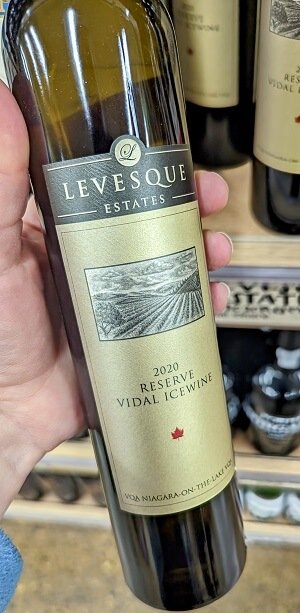
- Expect to pay between $15 USD – $70 USD for a bottle of Icewine. That’s q big range. There may only be one brand of icewine at your local shop.
- High-end bottles will cost +$80 USD.
Icewines fetch a premium in part due to the fact that the winegrower has to leave the berries out in the vineyards well-past harvest season. Birds, field mice, and bad weather take a toll on yields, making every berry that goes into these wines precious.
Icewines come in standard dessert wine bottles that are 375 ml (½ the size of a regular wine bottle). You’ll find ice wines from Canada and Germany at most specialty wine markets. Treat icewines like a dessert in themselves, or pair them with your fruit and cream-based desserts.
My Icewine Experience: This is a sweet white wine that I always pick up at duty-free stores when I fly out of Canada. It’s just so gosh darn delicious and a great after-dinner treat whenever I have friends over.
Sweet White Wine #7 – Sauternes

Sauternes (pronounced saw-turn) is a sweet white wine made in Bordeaux, France. It’s actually a blend of grapes: Semillon, Sauvignon Blanc, and Muscadelle.
These wines get their sweetness from Noble Rot, the fungus that pierces the grapes’ skins and dehydrates them (a.k.a. Botrytis), concentrating flavors and acids. Sauternes wines depend on precise growing conditions and yields vary every year, with some years hardly any wines made at all.
This makes these sweet white wines exceptional.
What Does Sauternes Taste Like?
Sauternes exudes marmalade, honey, almond, and sweet stone fruits. These sweet white dessert wines have high acid, a medium to full body, and medium alcohol (11%-13%). The wine brims in your glass like sunshine’s nectar, powerfully sweet and fruity.
How Much Does Sauternes Cost? – Premium Priced – Somewhat difficult to find
- Standarad Sauternes costs $30 – $45 USD.
- Premium Sauternes cost $50 – +$100 USD.
Helpful Tip: You can find discounted Sauternes around the winter holiday season when wine shops offer it as seasonal sweet white wine. I usually pick up 3-4 bottles of Sauternes around the holidays to enjoy throughout the year.
You’ll need to go to a large wine store to find Sauternes. It’s not a wine that a small corner shop or grocery store carries (well, maybe if you’re in Paris… but for the rest of us, go to a large wine store).
You may also find Sauternes-style sweet Semillon dessert wines from Australia, of all places.
Look for ½ bottles with the words: Botrytis Semillon.
These wines can be less expensive and start around $15 USD, which is a great way to learn about this fascinating sweet white wine style.
Sweet White Wine #8 – Passito Wines
Passito, meaning raisin in Italian, are traditionally made sweet dessert wines that use raisinated grapes. It’s believed that Passito wines were one of the most popular wine styles around the Mediterranean over the millennia because these wines were relatively indestructible and could withstand long sea voyages.
Consider Passito wines a category of wine.
You’ll find Passito wines from different regions of Italy made from the distinctive grapes of that region (both red and white). White Passito wines are often made from Moscato and Grechetto, for example.
What Does Passito Wine Taste Like?
Passito wines are full-bodied, medium acid, and on the higher end of alcohol (13%-16% ABV). These sweet white wines express intense aromas, with hints of honey, acacia flowers, and elderberry. You’ll discover exotic fruit and vanilla.
How Much Does Passito Wine Cost? – Mid- to Premium-priced – Difficult to find
- Basic Passito wines are very affordable, and you may find examples for around $10 USD.
- Mid-Priced Passito wine is $20 – $30 USD.
- Premium Passito wine is $40+ USD.
You’ll need to go to a wine store that specializes in Italian wines, or find these bottles online. You may be able to find a Passito wine at a big wine store, but I haven’t been able to.
Helpful Tip: This is a great opportunity to give a shout-out to all the local specialty wine shops in the world. They often carry curious bottles with knowledgeable, helpful staff. Go make friends with your local bottle shop owner. It’s a good relationship to have.
Sweet White Wine #9 – Tokaji

Believe it or not, there’s an uber-famous sweet white wine from Hungary, called Tokaji (pronounced toak-eye). This wine can be made from a blend of grapes, but the most common variety is the local white Furmint (foor-meent). This sweet white wine gets its sweetness from Botrytis, or Noble Rot, just like Sauternes.
What Does Tokaji Wine Taste Like?
Tokaji is an amber colored wine, with medium alcohol (around 11.5% – 13% ABV) and a luscious, silk sweet texture. These wines are medium bodied and high acid. Expect delicate aromas of exotic fruits and spice.
How Much Does Tokaji Cost? – Mid- to Premium-Priced – Somewhat difficult to find
- Entry-level sweet white Tokaji wines start around $25 USD
- Premium-priced Tokaji dessert wines start around $60 USD and can cost several hundred dollars depending on the wine’s style.
Tokaji has something of a reputation among wine lovers, so you should be able to find one or two bottles of this sweet white wine at large wine shops without too much difficulty.
Sweet White Wine #10 – White Port

If you thought Port was always red, then you’re missing out! White Port offers a twist on this classic Portuguese fortified wine style. White Port gets its sweetness from stopping fermentation early while there’s still grape juice. Winemakers do this by adding grape spirit.
The little yeasties can’t survive high alcohol environments, and Port has lots of alcohol! White Port will have 19%-22% ABV.
What Does White Port Taste Like?
White Port tends to be made Muscatel grapes, the same grape family used for Moscato d’Asti (some will use Malvasia). It’s no surprise, then, that White Port’s an excellent sweet and fruity white wine. Expect a similar taste profile as Moscato d’Asti: white flower, grape, honey, stone fruit, and light citrus. It can come in an oxidized style that highlights caramel and nuts, so you’ll want to read the wine descriptors carefully. Try both styles! Experiment!
How Much Does White Port Cost? – Mid-Priced – Difficult to find
Standard White Port costs $17 – $25 USD. White Port isn’t widely exported, so look for it at a specialty wine shop. Keep leftovers stopped in your fridge and enjoy within a few weeks of opening.
Helpful Tip: Even at my local boutique wine shop, they only carried 1 bottle of White Port. This is a sweet white wine that if you see it, grab it!
Sweet White Wine #11 – Vin Doux Naturel
Vin Doux Naturel: Vin Doux Naturel (VDN) in French means ‘Wine Sweet Naturally’. What better wine than a VDN if you want a sweet white wine? VDNs come from southern France and can be both white and red, so stick with the whites.
Most white VDNS are made with … wait for it… Muscat grapes.
VDNs get their sweetness by adding spirit to the wine early on in fermentation. This stops the yeast from converting the wine to alcohol leaving behind pure grape juice.
What Does White Vin Doux Naturel Taste Like?
White Vin Doux Naturel comes in two styles: unaged and aged.
- Unaged VDN wines showcase aromas of fresh grapes, citrus fruits, mango, and rose petal. These wines are pale lemon
- Aged white Vin Doux Natural has a light amber/whiskey color to go with sweet notes of golden raisins, bitter orange, almond, and subtle browned sugar.
Regardless of style, expect your sweet white VDN to have a medium to full body, and medium acid (lower than Riesling) with intense aromatics. While technically low alcohol for fortified wines, VDNs still have 15% AVB, so sip slowly!
How Much Does White Vin Doux Naturel Cost? – Mid-Priced – Difficult to find
- Expect to pay around $20 – $25 USD for VDNs, but the price can go quite high, especially for aged bottles.
VDNs aren’t widely distributed but are absolutely worth seeking out if you want to try a different kind of sweet and fruity wine. You will need to go to a specialty shop or find these unique sweet white wines online.
Helpful Tip: Check out this post to figure out how to read a VDN label and how to pick out a good VDN wine.
Sweet White Wine #12 – Cream Sherries
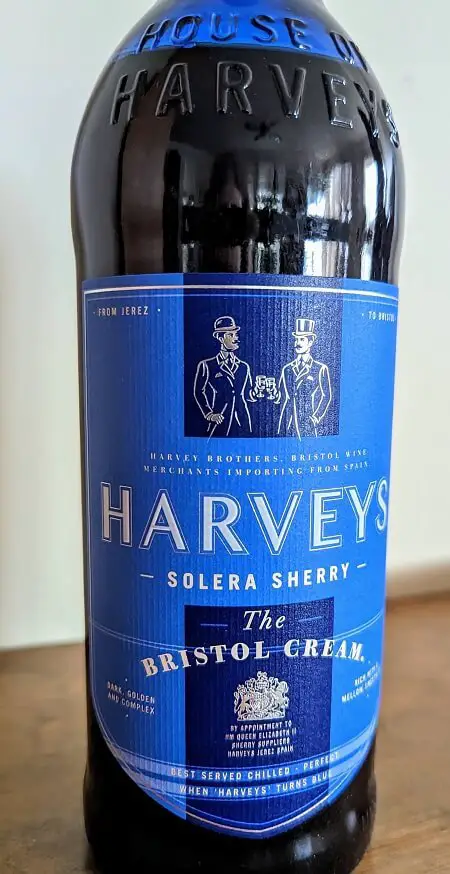
Another fortified sweet white wine is Cream Sherry from Spain. Producers make the base white wine for Cream Sherry out of Palomino grapes. After fermentation, they fortify the wine with grape spirit to 15%-22% ABV. Cream Sherries are always sweet and most inexpensive Cream Sherries are back-sweetened using rectified concentrated grape must.
Helpful Tip: I truly disliked Sherry when I first got into wine, but now it’s definitely one of my favorites. Sherry’s misunderstood. So, I wrote this post: What’s the Difference Between Sherry and Wine? Go check it out if you’re curious.
What Does Cream Sherry Taste Like?
Cream Sherry will have dried chamomile, dried orange peel, light biscuit notes, almond, walnut, and praline. These are medium-sweet, high-alcohol, low-acid, medium-bodied wines. Sherries are fascinating wines, and if you don’t care for dry Sherry, it’s worth investing in one of the sweet styles as an experiment.
How Much Does Cream Sherry Cost? – Mid-priced – Easy to find
Cream Sherry starts under $10 USD and most are under $20 USD. You should be able to find Cream Sherry at any liquor store with a decent range of wines.
Sweet White Wine #13 – Champagne and Sparkling Wine
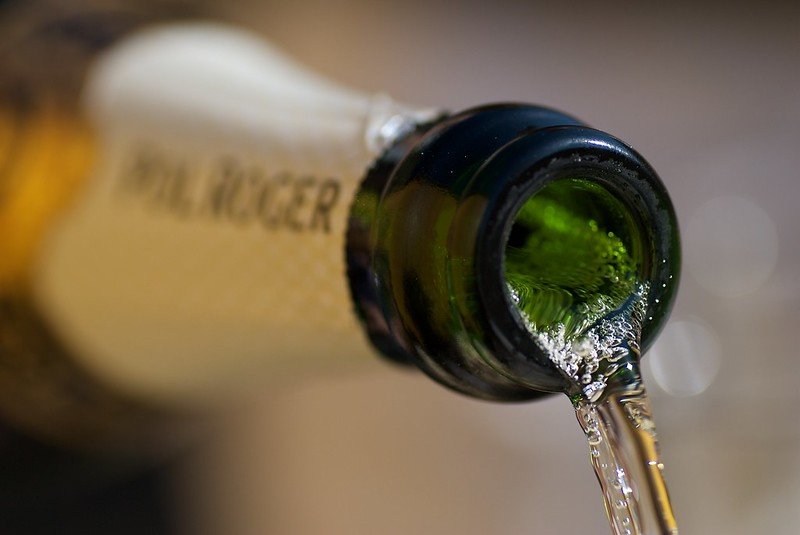
Champagne and sparkling white wines can be bone-dry or sweet. You’ll want to look for labels with any of the following terms:
- Sec/Dry 17-32 g/L
- Demi Sec/Medium Dry 32-50 g/L
- Doux/Dulce/Sweet 50+ g/L
Helpful Tip: You need to know how to crack the label code to pick a sweet Champagne or sparkling wine. So, I put together this overview post: Does Champagne Have Sugar?
Sweet styles of Champagne and sparkling wine get their sugar at the end of the winemaking process. The producer adds a sugar and wine mixture, called the dosage (dough-sawj) right before corking the bottle and sending it off to you. This is how they can make sparkling white wines with different sweetness levels.
Helpful Tip: Go check out this post that will help you figure out how to read a wine label.
How Much Does Sweet Champagne and Sparkling Wine Cost? – Inexpensive to Premium-priced – Somewhat easy to find
- You’ll find inexpensive, sweet sparkling wines under $10 USD and premium sweet sparkling wines that cost $80 USD and everything in between.
Sweet styles of sparkling wine are less common than drier styles, like Brut. Go to a store with a wide selection and you’ll be able to find a good bottle.
Sweet White Wine #14 – Extreme-Value White Wines

If you buy inexpensive, bargain-bin white wines that are mass marketed and mass distributed (in the US), it’s likely that they’ll have a little sweetness to them, or off-dry in style. This is the Charles Shaw 2 Buck-Chuck, [yellowtail], and many entry-level private label wines made for large grocery chains.
Helpful Tip: A private label wine is a store’s own wine brand. Trader Joe’s Charles Shaw and Costco’s Kirkland are private label wines. Check out this post on private label wines for a peek at how this wine business model works.
Extreme-value wines cost under $10 USD and are made in huge volumes by big producers. These wines will always be technically well-executed (even if inexpensive wine isn’t your thing). The target customer for these wines is someone who is just getting into wine or also enjoys sugary drinks, like soda, juices, or sports drinks.
By adding a little sugar back into the wine, the winemaker aims to have mass appeal with these wines.
At this price point and production level, many producers include a little sweetness scale on the label or clues like “off-dry” or “slightly sweet”. Use these clues to help you find a sweet white wine.

Final Thoughts – Different Sweet White Wines
Now that you know which white wine is sweet, the real question is what do you feel like drinking? From light and fruity Moscato and Liebfraumilch to luscious late harvest and passito wines, to everyday, inexpensive bottles you can pick up on your way home from work, there’s a sweet white wine style for you!
As always, the best advice anyone can give when it comes to trying new wines is to drink broadly. Find and try new wines each time you go shopping. This will help you discover your sweet white wine likes and dislikes. Is it the sweetness your after? Or the refreshing zip and fruit intensity? Teasing out what you love about white wines is what makes this journey so much fun!
Thirsty for More?
There are so many different delicious sweet wines in the world. Here’s a quick post on Good Sweet Wines for Beginners that you may be interested in.
And if you’re looking for the OPPOSITE of sweet white wines, here’s a post on which white wine is dry.



